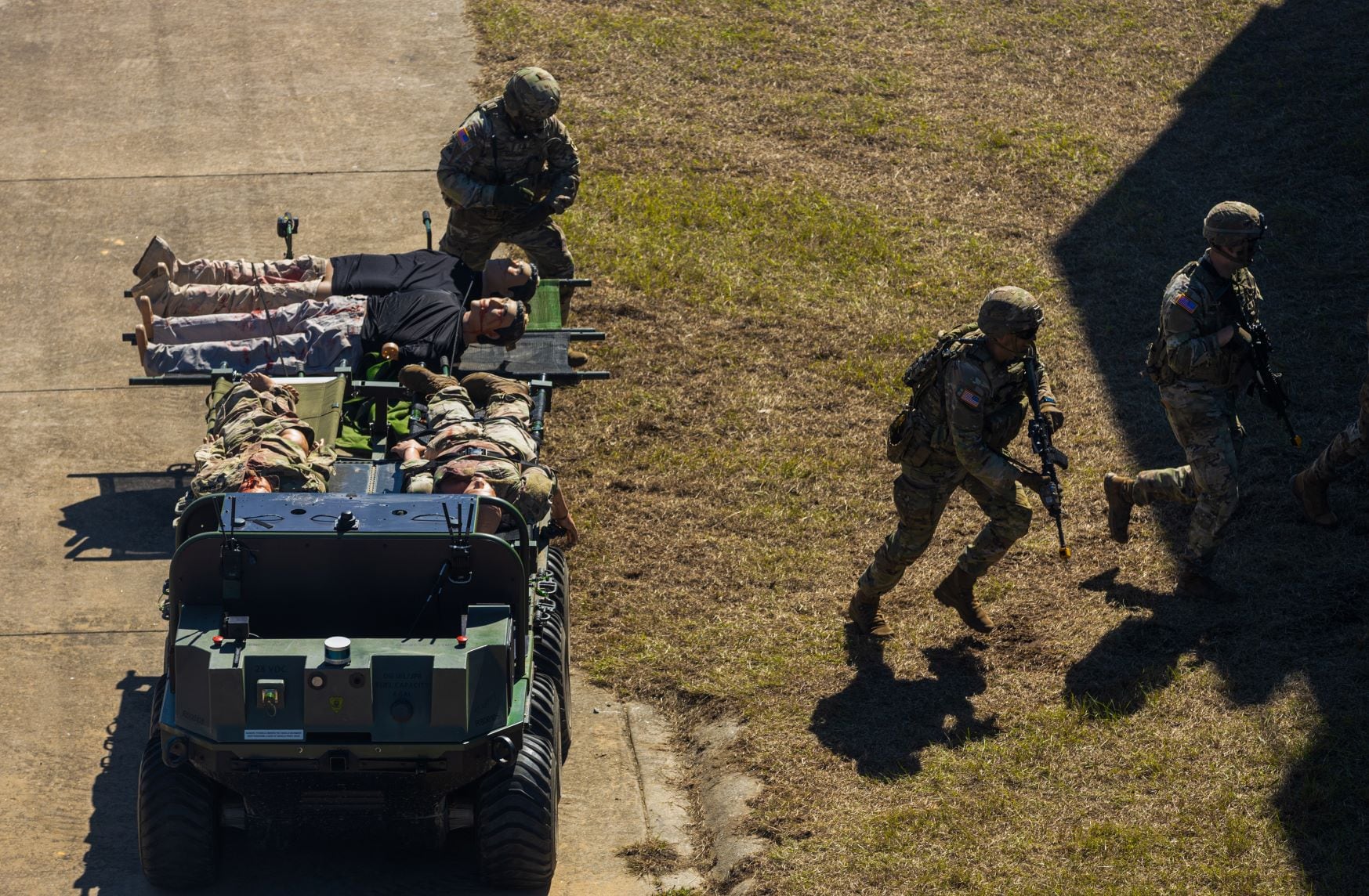Soldiers at both the Maneuver Center of Excellence and the National Training Center are testing out new platoon formations that integrate robots and other technology into dangerous combat scenarios.
Gen. James Rainey, head of Army Futures Command, described a recent scenario conducted by a light infantry platoon at Fort Moore, Georgia, during remarks at the Association of the U.S. Army periodic featured speakers event at the organization’s Arlington, Virginia headquarters.
“We’re prototyping platoons,” Rainey said. “This isn’t Power Point; we have our first human-machine integrated formation for light infantry.”
MCOE Experimental Company, 1st Battalion, 29th Infantry Regiment, 316th conducted an urban assault. But instead of human soldiers rushing across open areas and bursting into buildings, robots took the lead.
Rainey said 20 soldiers with four robotic vehicles were able to cross the open terrain to reach the building. But first robots with smoke generators created a screen.
At the same time, robot vehicles with tethered drones jammed enemy signals and extended the soldiers’ network. Small drones dropped robotic ground vehicles with cameras atop buildings to scout the interior while even smaller aerial drones entered windows, scanning the inside of the structure and transmitting back a “blueprint” of the building to soldiers on the ground.
Then robot “dogs” with cameras of their own, entered the building looking for hazards and seeking out enemy troops.
The experimental unit also showcased their current human-machine work during a mid-October Human Machine Integration Summit at Fort Moore.
“We demonstrated how a forward line of UAS (Unmanned Aircraft Systems) sensors can be deployed and supported by a forward line of armed robotics, all ahead of the forward line of troops,” said Capt. Tim Young, experimental company commander said in an Army release. “That way we’re sensing early on in the battlefield, we’re engaging with robots making sure we don’t shed human blood for first contact, and then we’re bringing in troops to finish the fight.”
Another human-machine integrated platoon with the opposite force trainers at the National Training Center at Fort Irwin, California is being built to work alongside mechanized formations. Due to the speed of movement of those types of units, Rainey said early work will focus on defensive positions until the robotic platforms can keep up with the fast-moving formation.
But early concepts and experimenting hold promise, he said.
He sketched out some early ideas that include taking a 14-tank company and adding four robots, 10 soldiers and a couple of Armored Multi-Purpose Vehicles. That might not seem like a lot of extra firepower, but with those extras, commanders can add loitering munitions, robot ammunition and battery resupply, keeping soldiers in the fight.
“One of the fascinating things is robotic (casualty evacuation),” Rainey said. “If you take casualties instead of four soldiers carrying one soldier on a litter, you could put four litters on a robot, keep the medic with it, preprogram a grid and (evacuate).”

Seeing these integrated units performing tactical tasks relieves a long-held frustration the general has had.
“The basic idea behind human-machine integration is our quest for what’s aspirational is absolutely blinding us to what’s doable,” Rainey said.
There may be a day when the Army has a robot tank that can travel 70km an hour through 6 feet of mud or a robot graduate Ranger School, Rainey said. But that’s not happening today.
As AFC commander, the general said he’s pushed leaders to work with what’s available now.
“We have the ability, and I think the moral responsibility, to not trade blood for first contact with the enemy anymore,” he said.
Trying to use robots to replace humans is going to take a long time, he said. But putting machines and humans together in an integrated formation helps put tasks on machines that unburden soldiers and allow them to do their jobs better.
“It’s really about risk,” Rainey said. “Why are we finding IEDs leading into a minefield with humans, with men and women?”
Todd South has written about crime, courts, government and the military for multiple publications since 2004 and was named a 2014 Pulitzer finalist for a co-written project on witness intimidation. Todd is a Marine veteran of the Iraq War.





